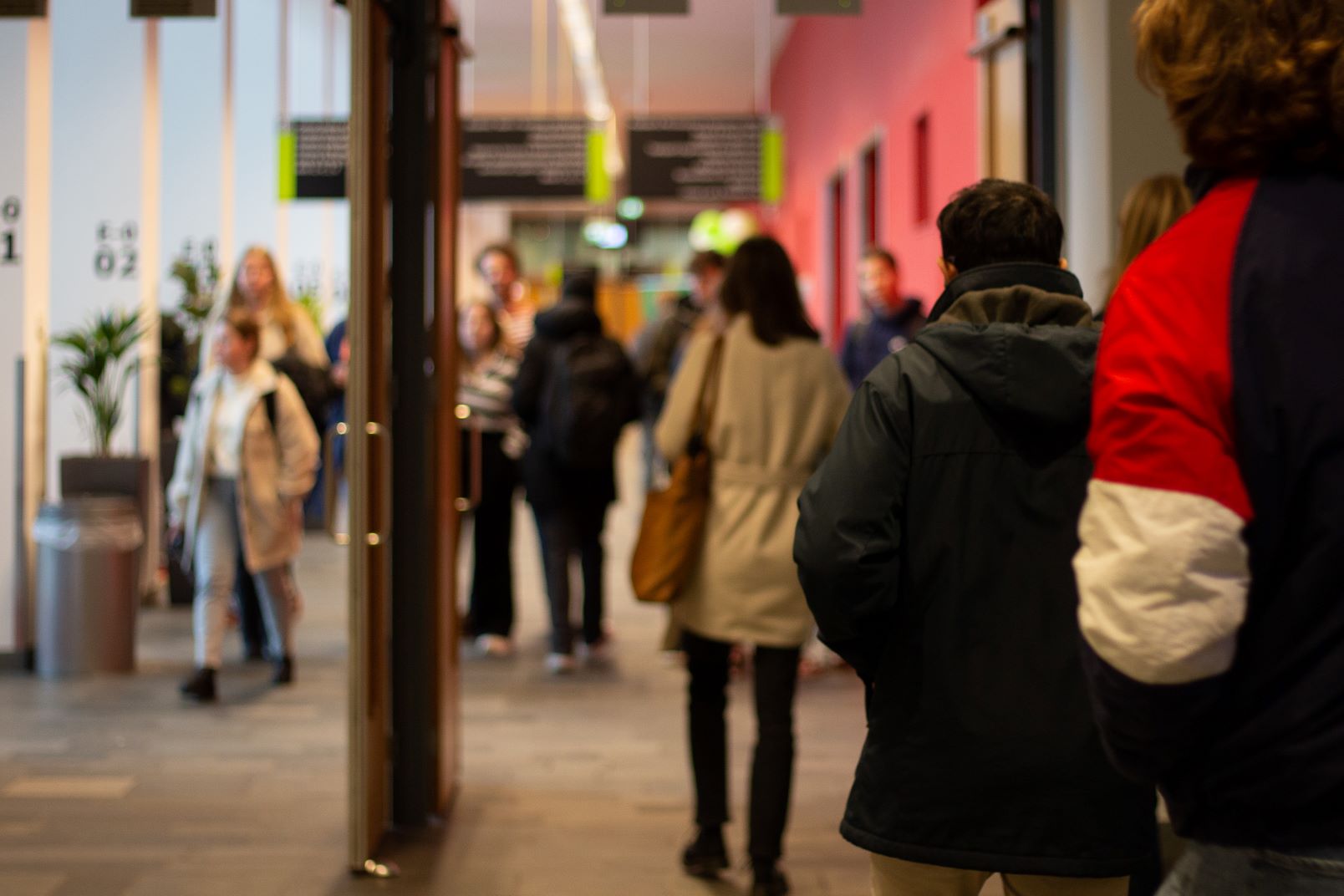Upon receiving an urgent letter about its growth plans, TU Delft spoke to five residents associations. A meeting with all nine associations is pending.
“What will happen with the flow of new students to Delft in the coming five to ten years?” (Photo: Justyna Botor)
The opinions and interests of the people in Delft have, as yet, not been fully heard by TU Delft while it worked on its future growth plans. This was the implication in a letter (in Dutch) that nine residents associations sent to the Mayor and Municipal Executive of Delft last month, with a cc to the Executive Board of TU Delft and the Municipal Council.
In light of the letter, Vice-Rector Magnificus Rob Mudde joined a meeting between TU Delft and five of the nine residents associations on 9 March, explains Alex Lokhorst, Liaison Community Relations. “I had already planned that meeting with the residents about OWee related subjects, but the letter and the future scenarios that TU Delft is currently exploring were also addressed. The residents were constructive in further explaining the letter.”
The penny has dropped
In September of last year, the Executive Board announced its plans to grow to 40,000 students to meet the ‘screaming demand for engineers’. The Board also wanted to go for a so-called multi-campus strategy whereby TU Delft would also have campuses in The Hague and Rotterdam. In the meantime, the Executive Board has adopted a different route in communications. According to the university administration, not only one but several scenarios are being explored, including one called the ‘student village’ with more student accommodation and hospitality outlets on Campus Zuid. Further, the growth to 40,000 students is not carved in stone, said Rector Magnificus Tim van der Hagen previously at a meeting with TU Delft’s Works and Student Councils.
The minutes of the meeting – which are in the possession of Delta – state that both TU Delft and the residents present are positive about the meeting. Maartje Martens confirms this. She is the DOBBio – the collective of residents associations that sent the letter – contact person and Secretary of the TU Noord residents association. “Residents have been saying for years that the city of Delft cannot cope with more growth of TU Delft. I get the impression that the penny has finally dropped. Our shout outs have finally been heard,” she says. Lokhorst says that “The city has sent a clear signal in this letter.”
Question marks about the reason for growth
While both sides are positive about the discussion, the Delft residents question the future plans, says Martens. They are concerned that thousands more students will still find their way to Delft in the years to come. “TU Delft continually talks about a multi-campus strategy. The idea is that this should relieve Delft in the long term as students can also live in Rotterdam and The Hague. But before the first foundations are laid, we will be five or ten years down the line. What will happen with the flow of new students to Delft in the meantime? And will entire degree programmes and student associations then move to Rotterdam or will students still have to come to Delft for lectures or for their student associations?”
The residents are still unsure of why TU Delft has to grow in the first place. They wonder if the demand is not greater for people who have gone through vocational training. Martens is mostly interested in the sources of the growth. “The number of Dutch students is forecast to drop over the years. Will the growth thus be mostly from abroad?” she asks. The Works Council, the Student Council and teachers at TU Delft have also previously questioned the rationale behind the demand for university educated engineers. At the time, there was no clear answer. In the meeting minutes, Mudde replies that training engineers ‘is essentially required by the Government’. “TU Delft only has limited control here.”
What now?
According to Lokhorst, TU Delft intends to involve residents in the discussions about the growth scenarios that is now officially called ‘Contouren2030’. Why this was not done from the start is still unclear. “Up to now, the consultation process was highly internal,” says Lokhorst. But it is not too late for the involvement of others, he emphasises. “I see the letter as an opportunity to talk to each other more often. Residents see and experience other things than we do and those sorts of experiences are useful and will help us further work out the plans.”
At the end of last year, the Executive Board held a consultation round among staff members and, later, students. The opinions that emerged are compiled in a 148 page document (in Dutch). According to a TU Delft spokesperson, ‘sessions will be held [for residents] so that their input can be included during the process’. How TU Delft will use that input, what the meetings will be like, when and how often they will be held is yet to be decided.
To date, no meeting with all nine residents associations is in the planning, says Martens. “I have received neither an invitation nor an official response. We are still hoping for a separate meeting. The Municipality and TU Delft, it’s up to you.”
- The urgent letter is signed by the Delfts Overleg Bewonersbelangenorganisaties (DOBBio) whose members are: Belangenvereniging Binnenstad Noord, Buurtvereniging Delftzicht, Bewonersvereniging Heel Tanthof Delft, Belangenvereniging Olofsbuurt-Westerkwartier Delft, Belangenvereniging Oude en Nieuwe Delft, Buurtstichting Rode Feniks, Belangenvereniging TU Noord, Belangenvereniging Voorhof II, and Belangenvereniging Zuidpoort.
- On Wednesday 5 April, the Executive Board had a meeting with the Municipal Council of Delft about the growth plans. In a previous interview with Delta, Municipal Council members stated that they were not properly involved in the plans.
Do you have a question or comment about this article?
a.m.debruijn@tudelft.nl


Comments are closed.